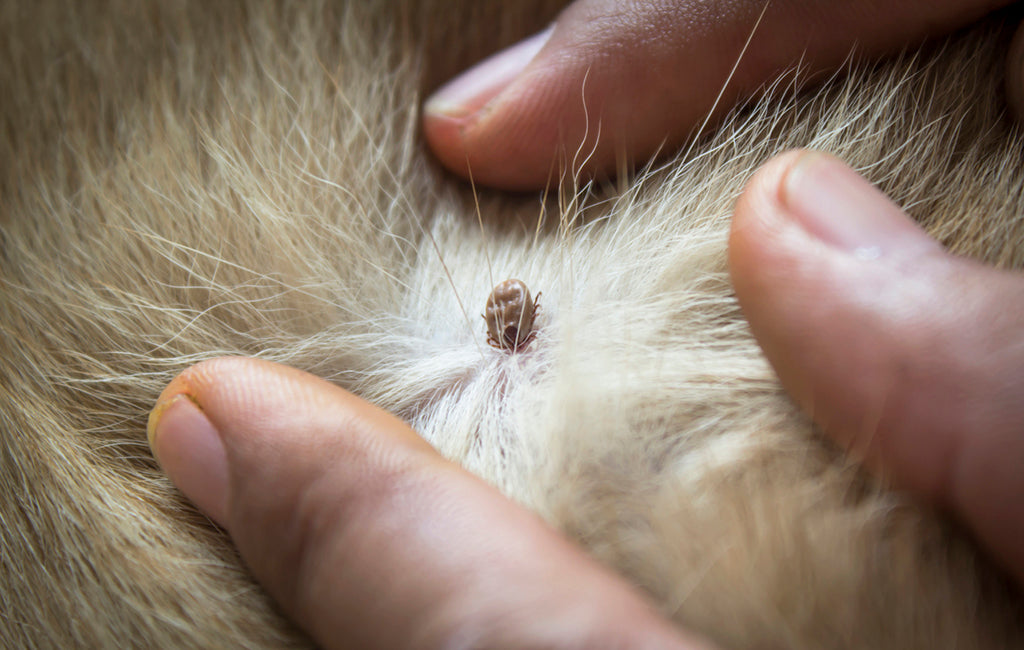
Ticks are a concern for dog owners who live in or visit areas where they’re prevalent. These parasites are more than just pests – they’re potentially dangerous to your dog’s health. Taking some extra measures to protect your dog from ticks can help to keep him healthy and may prevent serious diseases like Lyme disease, ehrlichiosis, and Rocky Mountain Spotted Fever.
And if you thought ticks were only a concern in warmer climates or seasons, think again. It takes a long, very cold winter to kill off these tenacious pests in numbers, and they have become a year-round problem in areas where winters are now warmer and wetter due to global warming.
#1 Use a Flea and Tick Preventative
A flea and tick preventative can help to protect your dog, and they’re available in many forms. Topical preventatives tend to discourage ticks from biting your dog, while oral products are absorbed into your dog’s bloodstream and poison the ticks when they bite your dog. Some flea collars are also effective against ticks.
Your vet can advise you about the type and form of tick preventative that’s best for your dog. Each type has advantages and disadvantages, so it’s important to consider your dog’s lifestyle, health and risk factors when deciding which option is right.
#2 Keep Your Dog On the Trail
You’ll most often find ticks in tall grass and wooded areas, so think carefully about where you walk your dog. If you’re heading into the woods, then keep your dog on a leash and don’t let him stray off the trail. Keeping your lawn mowed can also help to reduce the chance your dog will pick up ticks in your yard.
#3 Do a Daily Tick Check
Check your dog for ticks daily, especially after a walk. Be very thorough and dig your fingers down through your dog’s coat to the skin. While ticks can bite your dog anywhere, they tend to be attracted to the neck, head and ears. Be sure to check underneath your dog’s collar, too.
#4 Properly Remove Embedded Ticks
If you do find a tick that’s embedded, be sure to remove it correctly. Simply grasping the tick’s body with tweezers can cause it to regurgitate into your dog, and you may also leave the tick’s mouth parts embedded.
Instead, grip the tick by the head with a pair of fine point tweezers or a tick removal hook, as close to your dog’s skin as possible, and slowly pull upward until the tick releases its grip.
#5 Know the Signs of Tick-Borne Diseases
Dogs can develop many tick-borne diseases, though the specific diseases that you have to worry about will depend on where you live or travel to with your dog.
It’s a good idea to be familiar with these common symptoms of tick-borne diseases:
- fever
- appetite loss
- painful joints
- on and off lameness
- lethargy
- swollen lymph nodes
If you notice these symptoms in your dog, schedule a vet appointment right away. Your vet can perform testing and diagnostics to determine just what’s affecting your dog and what treatment he may need.
#6 Use CBD Balm
If your dog’s skin becomes irritated from tick or flea bites, CBD can give him some relief.
Staying vigilant about ticks and other pests can potentially prevent your dog from developing skin irritation and serious illness. Nevertheless, these pests can be difficult to avoid, so it’s a good idea to keep some CBD skin balm on hand just in case he develops itchy spots or an allergic response after a romp in the great outdoors.
#7 Tick-Free Tails and Calm Canine Hearts
Protecting your dog from ticks is vital for their physical and mental well-being. Ticks can lead to stress and anxiety in dogs due to discomfort and health risks. Fortunately, you can safeguard your furry friend through tick prevention and cleanliness.
To further support your dog's overall well-being, consider exploring the world of CBD calming chews for dogs and other innovative CBD products. These specially crafted solutions can help alleviate stress and promote relaxation, ensuring your canine companion enjoys a happy, stress-free life.










